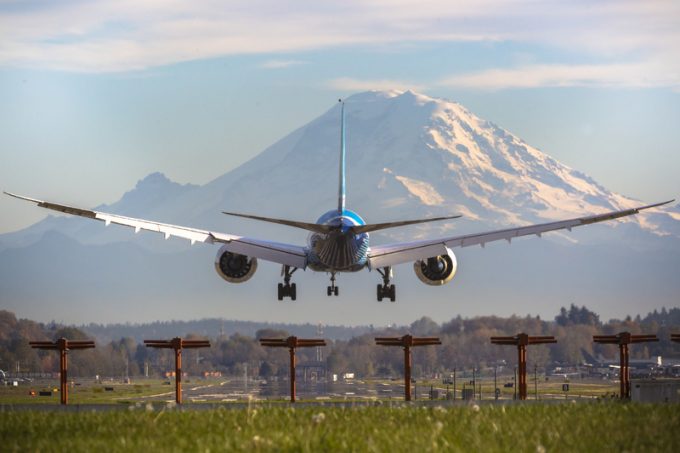News in Brief Podcast | Week 51 | Airfreight peak, management shuffles and automation impasse
In this episode of The Loadstar’s News in Brief Podcast, host and news reporter Charlotte Goldstone ...
FDX: ABOUT USPS PRIVATISATIONFDX: CCO VIEWFDX: LOWER GUIDANCE FDX: DISRUPTING AIR FREIGHTFDX: FOCUS ON KEY VERTICALFDX: LTL OUTLOOKGXO: NEW LOW LINE: NEW LOW FDX: INDUSTRIAL WOESFDX: HEALTH CHECKFDX: TRADING UPDATEWMT: GREEN WOESFDX: FREIGHT BREAK-UPFDX: WAITING FOR THE SPINHON: BREAK-UP ALLUREDSV: BREACHING SUPPORTVW: BOLT-ON DEALAMZN: TOP PICK
FDX: ABOUT USPS PRIVATISATIONFDX: CCO VIEWFDX: LOWER GUIDANCE FDX: DISRUPTING AIR FREIGHTFDX: FOCUS ON KEY VERTICALFDX: LTL OUTLOOKGXO: NEW LOW LINE: NEW LOW FDX: INDUSTRIAL WOESFDX: HEALTH CHECKFDX: TRADING UPDATEWMT: GREEN WOESFDX: FREIGHT BREAK-UPFDX: WAITING FOR THE SPINHON: BREAK-UP ALLUREDSV: BREACHING SUPPORTVW: BOLT-ON DEALAMZN: TOP PICK

Shippers and forwarders are facing the prospect of tightening airfreight capacity driving up pricing. Growth in demand and available lift have diverged increasingly this year, and supply of large widebody aircraft remains constricted by supply chain issues and other problems in aircraft manufacturing. This has a knock-on effect on the availability of planes for conversion into cargo aircraft, further exacerbating the constraints on capacity.
In its latest update on the market, aircraft appraising and aviation consulting firm IBA noted that aircraft deliveries have fallen behind projections made at the beginning of the year, affecting both passenger and freighter output.
This year the passenger fleet has grown at a slower pace than in 2023, which has pushed out the full recovery of the global aircraft fleet to 2018 levels beyond 2026, noted IBA chief economist and executive advisor Stuart Hatcher.
Instead of 96 B787s as predicted in January, Boeing stands to deliver only 58 aircraft of this type this year. The US plane maker has had some specific problems, of course, which are not helped by the current machinists’ strike, but its competitors are also behind on their deliveries. Output of all plane manufacturers has been hobbled by supply chain issues and problems with aircraft engines. Neither of these problems is expected to go away any time soon.
As the supply woes continue, airlines and leasing firms are holding on to ageing aircraft that would normally exit passenger service, IBA pointed out. Normally a portion of the retired passenger fleet would become available for freighter conversions, but with these planes kept in passenger service, the feedstock for conversions has shrunk.
The situation has also pushed up the residual value of potential conversion candidates as well as the price tags of new planes.
“The values of new widebodies continue to grow against the backdrop of strong orders,” IBA noted, pointing out that the values of A330ceos have doubled in 12 months. The value of the Boeing 777-300ER, a candidate for conversions, has surged in value in the last quarter, according to IBA.
Boeing’s problems have contributed to the slow progress of certification of 777 conversion programmes. Israel Aerospace Industries, the first to come out of the stating blocks with such a programme, had anticipated certification to be completed by the past spring, but is still waiting for the US Federal Aviation Administration to start the process.
Meanwhile, Boeing’s output of 777 production freighters is in low gear. Instead of delivering 26 this year, as forecast in January, the manufacturer will deliver 18, according to IBA.
With the 777X programme still in limbo, Boeing has not delivered a 777 in passenger configuration in over two years, pointed out Tom Crabtree, MD of Trade & Transport.
At the same time, widebody bellyhold capacity to and from China remains well below 2019 levels. According to Cirium, in July there were 23% fewer flights out of China than in the same month in 2019.
Chinese airlines have not fully rebuilt their international networks, as the economic slump there has zapped demand for international travel. For the same reason, plus extended flight routes owing to bans on using Russian airspace, several western passenger airlines have not expanded – some have even reduced – their China flights. The large US passenger airlines have refrained from stepping-up frequencies to China and lobbied the US government not to approve more flights by their Chinese counterparts.
These issues have hobbled the growth in international widebody capacity, resulting in a widening gap with the rise in cargo demand. In July, capacity was up 8.3% from a year earlier, whereas cargo traffic had grown 13.6%, according to IATA statistics; and Mr Crabtree also pointed out that belly capacity had grown at the slowest rate over the past 40 months.
This puts a greater burden on the global freighter fleet, but with conversions not yet available for 777s, Boeing’s factory-built 777-200F is the only organic source of new longhaul capacity for the foreseeable future, he noted.
“The Boeing strike could not have arrived at a more inopportune time,” he added.
Comment on this article